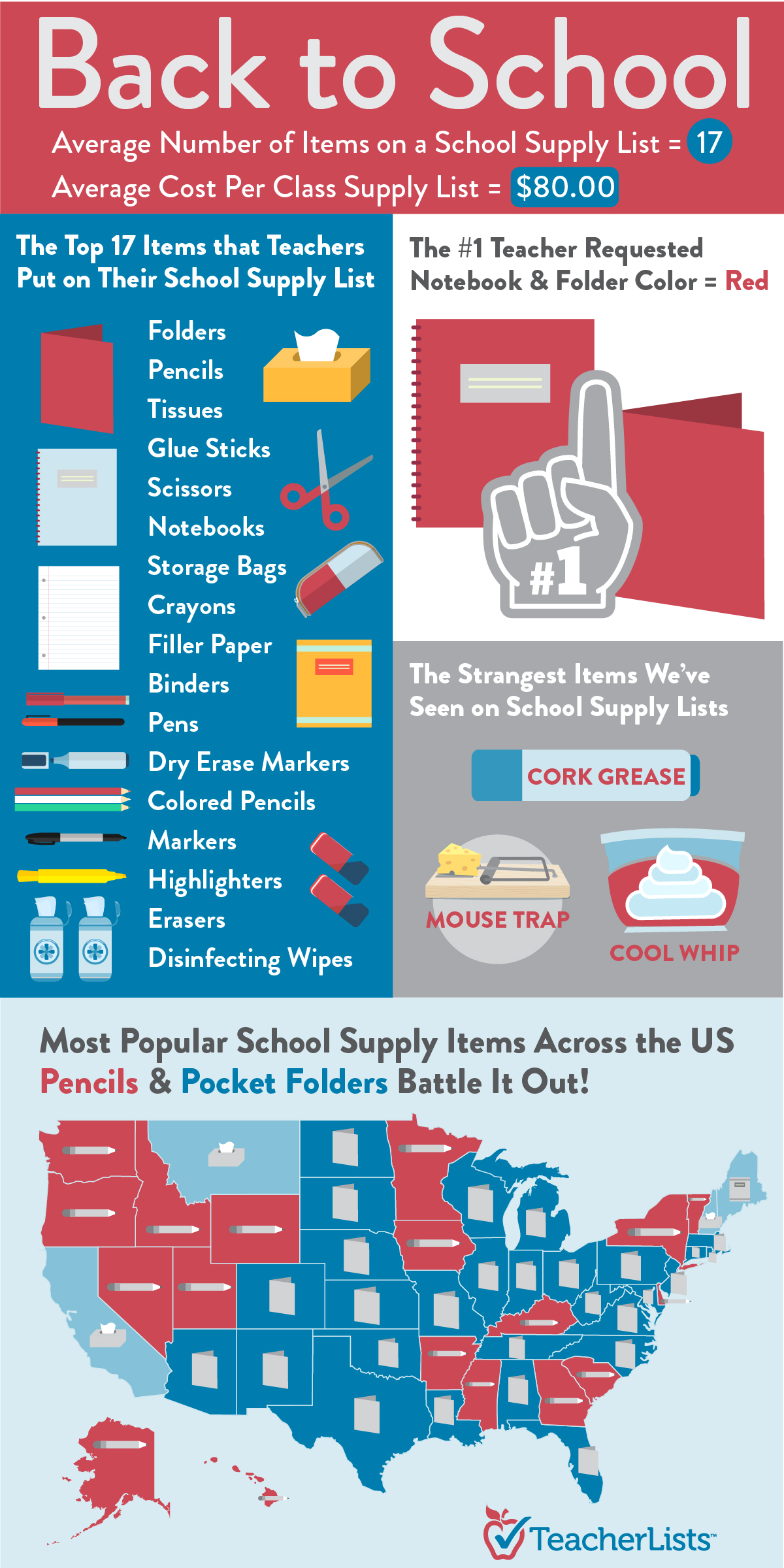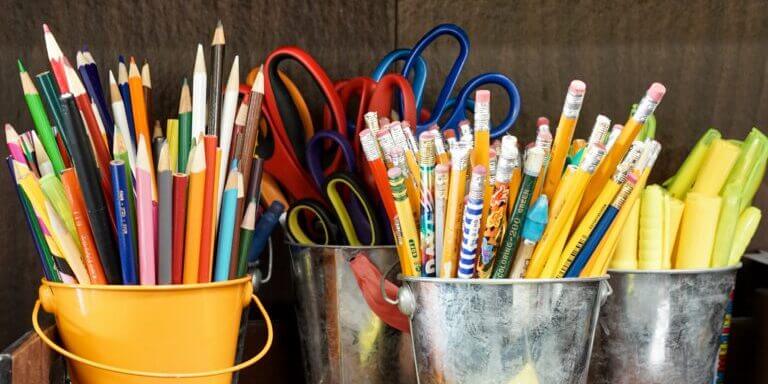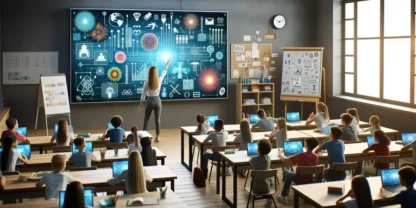Parents have come to expect classroom donation wishlists from teachers. They might send a few extra bottles of hand sanitizer or tissues with their kids on the first day of school and are eager to keep your class supplied with markers and construction paper. All of these supplies are incredibly useful, but they also have their limits.
Before you start the new school year, look over your classroom donations list and add a few essentials that will make it easier to run your classroom. All of these items are under $25 so parents don’t have to splurge to help you fill your classroom. Even parents that can only afford to spend a few dollars can have a big impact on your resource list. Here’s what you need to add.
1. Velcro
Velcro is secretly one of the best tools in a teacher’s arsenal. You can use velcro to hang up your bathroom passes, create spelling walls and other interactive posters with velcro, and can change up your decorations seasonally. It is much better to use velcro than tape. Tape is a single-use item. Once it’s done, you have to remove and replace it again. You can use velcro for the entire school year and it’s just as strong.
Parents can buy velcro sticky coins for $5 at most grocery stores and craft shops. They can also buy bulk packs and industrial roles for $15 – $25 online.
2. Mini White Boards
Whiteboards allow kids to write and erase answers throughout the lesson. They allow for interactive questioning and provide a break from the normal practices of writing on paper. You can use dry erase boards for kids to vote on answers or to show their work. You can find some whiteboard packs for under $25 online or you can buy for the class in bulk for under $50.
3. White Board Markers
If you ask for whiteboards on your classroom donations list, then the need for whiteboard markers is self-explanatory. Even the most careful kids can leave markers uncapped, which means you will need to replace most of them throughout the year. Fortunately, basic packs of dry erase markers cost between $5 – $10.

Source: Teacher Lists
4. Dry Erase Pockets
While you are adding reusable items to your classroom donations list, look into dry erase pockets. With these items, students can fill out worksheets using dry erase markers instead of writing with a pencil on paper. If a student makes a mistake, they can easily erase the answer and try again.
These pockets allow you to reuse printed worksheets from one year to the next. Or you can create template documents that kids fill out regularly. You can buy a pack of 25 pockets for under $20 on Amazon.
5. Paper Towels
Spills happen. Especially when you teach young students and especially when you get crafty or bring food into the classroom. Paper towels are cheap and your students can bring in individual roles throughout the year. Parents will likely find that paper towels are an everlasting staple on your classroom donations list.
A single roll of paper towels costs less than a dollar at Walmart.
6. Shaving Cream
Shaving cream is one of the best-kept secrets that teachers have to keep kids entertained. Students can answer math problems in the shaving cream that is spread across their desks or spell out sight words to better recognize them. Plus, teachers get the benefit of cleaning each desk by wiping away the shaving cream after.
Shaving cream foams easily, but you will still use a lot of it in a single class. Fortunately, a bottle of Barbasol costs less than $2.
7. Stickers and Stamps
The classroom might look a little different from when you were little, but some things never change with students. Almost every child is eager to see a celebratory sticker or stamp on their assignment. While stickers are cheap, their cost can add up over the year. Ask parents to donate stickers, stamps, and ink pads so you can reward your students.
Sticker reminders are particularly useful around holidays. Parents can check the clearance section of the craft aisle to find Halloween or Valentine’s Day stickers. If you don’t use the stickers this year, you can save them for next year. Sticker packs are often less than $5 and can be less than $1 on clearance.
8. A Magnetic Curtain Rod
Work smarter, not harder with your lesson planning. Some teachers hand up a magnetic curtain rod and use it to attach posters and visual aids throughout the class. This is useful if you need to use the same visual aids throughout the year or if you want to reuse the posters you make.
While you might have to make posters this year that support your lesson plans, you can save them for next year, which will also help you save time in lesson planning. You can find these for less than $20 on Amazon.
9. Games and Puzzles
There is always a desperate need to keep students entertained throughout the day. Some kids will finish their assignments early and need to be kept occupied so they don’t bother their peers. If there is a rainy week, you might have to entertain your students inside, which means you need games that will entertain them.
Ask parents to dig up games and puzzles they no longer need but still have all of the pieces to. This allows parents who can’t contribute financially to donate to your wishlist. Even if you have games in your current classroom, you might need to replace some pieces and worn-out boards in a year or two.
Pro tip: many of these games can also be used in assignments with a little creativity. Games like Connect 4 and Jenga can be used frequently in the math classroom.
10. LEGO Bricks
Another way that families can donate to your classroom is to give you LEGO sets and bricks. The best part is that the LEGO sets don’t even need to be complete or organized. Parents can donate large bags of disorganized LEGOs and you can use them constantly in your classroom.
LEGO bricks can be used to discuss math concepts, review physics ideas, and complete challenges with project-based learning. They allow students to tap into their creative sides while still reinforcing the lesson.
11. Books for the Classroom Library
Throughout the year, the pages in your books will get torn, colored on, and covered in various sticky substances. Kids are hard on books – especially if they love reading them. Ask parents to look at their bookshelves and donate any books their kids no longer need. There are a few ways to do this effectively that go beyond adding them to your traditional classroom donations list:
- Ask parents to donate books at the end of the school year that kids have grown out of. This is a celebration of how advanced the students have become!
- Set up a book exchange program. When a student brings in two books to donate, give them a book to take home.
- Work with the entire school to host a book drive, then sort donated books by reading level.
The goal of these efforts is to make book donations free for parents; however, you want to make sure kids have enough books at home to read for fun.
12. Storage Containers
As items from your classroom donations list come in, you will need a place to store all of these supplies. Storage containers of all sizes – big and small – are useful in your classroom. Small containers can help you sort supplies to grab them easily. Larger containers can hold bulky items like the games and puzzles you collect.
Try to be specific about the sizes you need. Parents can buy large storage tubs for under $10 or can donate old shoeboxes for free.
Save on Supplies so You Can Invest in Other Resources
Most teachers manage a delicate budget throughout the year. They need to get the right supplies for each class but also have to stay within the limitations the district sets. Not every teacher can afford to pay for items out of pocket – and they shouldn’t have to.
Create a classroom donations list and update it throughout the year. Let parents know when there is a deal for buy-one-get-one paper towels or shaving cream, which could help you stock your class with these items.
If parents can help you fill your classroom, then you can use your budget in more creative ways. Look for tools and online resources that can enhance the learning experience. These digital apps can connect with the in-person activities you create. Try eSpark today and see how we can help improve your classroom experience.



